From Silos to Synergies: A Nexus Framework for Innovation-Driven Sustainability Ecosystems
Abstract
1. Introduction
2. Theoretical Background
2.1. Framings and Conceptualizations of Innovation-Driven Platforms
2.2. The Nexus
3. Methods
3.1. Research Context
3.2. Research Approach
3.3. Cases
3.3.1. Case 1: EcoMotion
3.3.2. Case 2: GrowingIL
3.3.3. Case 3: PLANETech
3.4. Data-Gathering Tools
3.5. The Data-Analysis Process
4. Findings
4.1. The Participatory Architecture: Management Stages of the III Platforms
4.1.1. Stage 1: Defining Platform Operational Routines
4.1.2. Stage 2: Stakeholder Engagement
4.1.3. Stage 3: Re-Evaluating and Refining Strategies
4.2. Moving from Three Established Innovation-Driven Platforms to the Nexus Model
5. Discussion and Conclusions
- Stakeholder-centered dialogue: It places greater emphasis on engaging with stakeholders, prioritizing the challenges they identify within the broader ecosystem.
- Cross-Sectoral and global reach: It expands beyond individual sectors and national boundaries to stimulate the exchange of novel ideas, capabilities, and knowledge.
- Centralized digital infrastructure: It relies on a digitized platform that serves as a central hub, offering accessible information about all stakeholders involved in the climate space.
- Open and self-linking functionality: The platform is designed to allow stakeholders to actively connect and share their own information and knowledge, fostering real-time collaboration and transparency.
- Sustainable economic model: It introduces new financial mechanisms to support the operations of the platform, such as membership fees, consulting and scouting services, and targeted data analytics provided by III experts.
6. Limitations and Suggestions for Further Research
Author Contributions
Funding
Institutional Review Board Statement
Informed Consent Statement
Data Availability Statement
Acknowledgments
Conflicts of Interest
Appendix A
| Growth Process in a Specific Ecosystem | ||||||
| Defining Platform Operational Routines by the III | Stakeholders Engagement | Re-Evaluation of Operational Routines | ||||
| Identifying needs, scale, scope, and complex challenges, as well as market failures and key stakeholders in a specialized field of sustainable development. Facilitating initial platform events to foster collaborations within a specific area of sustainable development. Collecting and reviewing participant feedback from initial events. | Bringing multiple stakeholders into platform events. Establishing digital platforms, such as the marketplace. Facilitating open-innovation collaborations through in-person interactions and information sharing. Identifying potential state or industry funding opportunities. Participating in presentations of prototypes or models. | Designing platform events to address specific needs in a specialized field of sustainable development. Engaging experts to generate interest, present options, and facilitate connections. Supporting the integration of innovation within organizations. Educating organizations on open-innovation collaborations. Maintaining and updating the platform database for continued support. | ||||
 | Reviewing Feedback |  | Reviewing Feedback | |||
References
- Chen, C.-H.; Yen, K.-W. Developing International Collaboration Indicators in Fisheries Remote Sensing Research to Achieve SDG 14 and 17. Sustainability 2023, 15, 14031. [Google Scholar] [CrossRef]
- Gümüsay, A.A.; Reinecke, J. Imagining Desirable Futures: A call for prospective theorizing with speculative rigour. Organ. Theory 2024, 5, 26317877241235939. [Google Scholar] [CrossRef]
- Delbridge, R.; Helfen, M.; Pekarek, A.; Schuessler, E.; Zietsma, C. Organizing sustainably: Introduction to the special issue. Organ. Stud. 2024, 45, 7–29. [Google Scholar] [CrossRef]
- Ferraro, F.; Etzion, D.; Gehman, J. Tackling grand challenges pragmatically: Robust action revisited. Organ. Stud. 2015, 36, 363–390. [Google Scholar] [CrossRef]
- George, G.; Howard-Grenville, J.; Joshi, A.; Tihanyi, L. Understanding and tackling societal grand challenges through management research. Acad. Manag. J. 2016, 59, 1880–1895. [Google Scholar] [CrossRef]
- Geels, F.W. The Multi-Level Perspective on Sustainability Transitions: Responses to Seven Criticisms. Environ. Innov. Soc. Transit. 2011, 1, 24–40. [Google Scholar] [CrossRef]
- Alkaraan, F.; Elmarzouky, M.; de Sousa Jabbour, A.B.L.; Jabbour, C.J.C.; Gulko, N. Maximising Sustainable Performance: Integrating Servitisation Innovation into Green Sustainable Supply Chain Management under the Influence of Governance and Industry 4.0. J. Bus. Res. 2025, 186, 115029. [Google Scholar] [CrossRef]
- Gunderson, L.H.; Holling, C.S. Panarchy: Understanding Transformations in Human and Natural Systems; Island Press: Washington, DC, USA, 2002; pp. xxiv+507. [Google Scholar]
- World Commission on Environment and Development (WCED). Our Common Future; Oxford University Press: Oxford, UK, 1987; pp. 1–91. [Google Scholar]
- Lozano, R.; Lozano, F.J. Developing a Decision-Making Tree for Circular Economy. Sustain. Dev. 2024, 32, 1589–1598. [Google Scholar] [CrossRef]
- Shmeleva, N.; Tolstykh, T.; Krasnobaeva, V.; Boboshko, D.; Lazarenko, D. Network Integration as a Tool for Sustainable Business Development. Sustainability 2024, 16, 9353. [Google Scholar] [CrossRef]
- Boer, H.; Goduscheit, R.C.; Schweisfurth, T.; Visser-Groeneveld, J. The Role of Creativity and Innovation in the Quality of Our Lives, the Planet and Science. Creat. Innov. Manag. 2024, in press. [Google Scholar] [CrossRef]
- Sun, M.; Zhang, X.; Zhang, X. The Impact of a Multilevel Innovation Network and Government Support on Innovation Performance—An Empirical Study of the Chengdu–Chongqing City Cluster. Sustainability 2022, 14, 7334. [Google Scholar] [CrossRef]
- Oliver, A.L.; Rittblat, R. Facilitating Innovation for Complex Societal Challenges: Creating Communities and Innovation Ecosystems for SDG Goal of Forming Partnerships. Sustainability 2023, 15, 9666. [Google Scholar] [CrossRef]
- Quintarelli, V.; Ben Hassine, M.; Radicetti, E.; Stazi, S.R.; Bratti, A.; Allevato, E.; Borgatti, D. Advances in Nanotechnology for Sustainable Agriculture: A Review of Climate Change Mitigation. Sustainability 2024, 16, 9280. [Google Scholar] [CrossRef]
- Hörisch, J.; Schaltegger, S.; Weissbrod, I.; Schreck, P. If You Call for Frameworks in Sustainability Management… Editorial to the Special Issue. J. Bus. Econ. 2023, 93, 559–566. [Google Scholar] [CrossRef]
- Wittneben, B.B.; Okereke, C.; Banerjee, S.B.; Levy, D.L. Climate Change and the Emergence of New Organizational Landscapes. Organ. Stud. 2012, 33, 1431–1450. [Google Scholar] [CrossRef]
- Gehman, J.; Lounsbury, M.; Greenwood, R. How Institutions Matter: From the Micro Foundations of Institutional Impacts to the Macro Consequences of Institutional Arrangements. Res. Sociol. Organ. 2016, 48, 1–34. [Google Scholar]
- Kostova, T.; Beugelsdijk, S.; Scott, W.R.; Kunst, V.E.; Chua, C.H.; van Essen, M. The Construct of Institutional Distance through the Lens of Different Institutional Perspectives: Review, Analysis, and Recommendations. J. Int. Bus. Stud. 2020, 51, 467–497. [Google Scholar] [CrossRef]
- Phillips, N. Organizing Innovation. In The Oxford Handbook of Innovation Management; Dodgson, M., Gann, D.M., Phillips, N., Eds.; Oxford University Press: Oxford, UK, 2013; pp. 482–505. [Google Scholar]
- Reay, T.; Hinings, C.R. Managing the Rivalry of Competing Institutional Logics. Organ. Stud. 2009, 30, 629–652. [Google Scholar] [CrossRef]
- Lounsbury, M. A Tale of Two Cities: Competing Logics and Practice Variation in the Professionalizing of Mutual Funds. Acad. Manag. J. 2007, 50, 289–307. [Google Scholar] [CrossRef]
- Lounsbury, M.; Steele, C.W.; Wang, M.S.; Toubiana, M. New Directions in the Study of Institutional Logics: From Tools to Phenomena. Annu. Rev. Sociol. 2021, 47, 261–280. [Google Scholar] [CrossRef]
- Thornton, P.H.; Ocasio, W. Institutional Logics. In The SAGE Handbook of Organizational Institutionalism; Greenwood, R., Oliver, C., Suddaby, R., Sahlin, K., Eds.; SAGE Publications: London, UK, 2008; pp. 99–128. [Google Scholar]
- Stephan, R.M.; Mohtar, R.H.; Daher, B.; Embid Irujo, A.; Hillers, A.; Ganter, J.C.; Sarni, W. Water–Energy–Food Nexus: A Platform for Implementing the Sustainable Development Goals. Water Int. 2018, 43, 472–479. [Google Scholar] [CrossRef]
- Seddon, N.; Chausson, A.; Berry, P.; Girardin, C.A.; Smith, A.; Turner, B. Understanding the Value and Limits of Nature-Based Solutions to Climate Change and Other Global Challenges. Philos. Trans. R. Soc. B 2020, 375, 20190120. [Google Scholar] [CrossRef] [PubMed]
- Malhi, Y.; Franklin, J.; Seddon, N.; Solan, M.; Turner, M.G.; Field, C.B.; Knowlton, N. Climate Change and Ecosystems: Threats, Opportunities and Solutions. Philos. Trans. R. Soc. B 2020, 375, 20190104. [Google Scholar] [CrossRef] [PubMed]
- Shrimpton, E.A.; Balta-Ozkan, N. A Systematic Review of Socio-Technical Systems in the Water–Energy–Food Nexus: Building a Framework for Infrastructure Justice. Sustainability 2024, 16, 5962. [Google Scholar] [CrossRef]
- Menuhin, J. Innovation Ecosystem Management Methodology; Inter-American Development Bank (IDB): Washington, DC, USA, 2024; Available online: https://publications.iadb.org/en/innovation-ecosystem-management-methodology (accessed on 1 July 2025).
- Costanza, R.; Kubiszewski, I. A nexus approach to urban and regional planning using the four-capital framework of ecological economics. In Environmental Resource Management and the Nexus Approach: Managing Water, Soil, and Waste in the Context of Global Change; Springer: Berlin, Germany, 2016; pp. 79–111. [Google Scholar]
- Brouwer, F.; Caucci, S.; Karthe, D.; Kirschke, S.; Madani, K.; Mueller, A.; Guenther, E. Advancing the Resource Nexus Concept for Research and Practice. In Environmental Resource Management and the Nexus Approach; Springer: Cham, Switzerland, 2023; pp. 41–65. [Google Scholar]
- Bleischwitz, R.; Spataru, C.; VanDeveer, S.D.; Obersteiner, M.; Van Der Voet, E.; Johnson, C.; Van Vuuren, D.P. Resource nexus perspectives towards the United Nations sustainable development goals. Nat. Sustain. 2018, 1, 737–743. [Google Scholar] [CrossRef]
- Chen, B. Energy, Ecology and Environment: A Nexus Perspective; Springer: Singapore, 2016; pp. 1–2. [Google Scholar]
- Nambisan, S. Digital Entrepreneurship: Toward a Digital Technology Perspective of Entrepreneurship. Entrep. Theory Pract. 2017, 41, 1029–1055. [Google Scholar] [CrossRef]
- Granstrand, O.; Holgersson, M. Innovation ecosystems: A conceptual review and a new definition. Technovation 2020, 90, 102098. [Google Scholar] [CrossRef]
- Boyer, J. Toward an evolutionary and sustainability perspective of the innovation ecosystem: Revisiting the panarchy model. Sustainability 2020, 12, 3232. [Google Scholar] [CrossRef]
- Russell, M.G.; Smorodinskaya, N.V. Leveraging complexity for ecosystemic innovation. Technol. Forecast. Soc. Change 2018, 136, 114–131. [Google Scholar] [CrossRef]
- Ji, H.; Zou, H.; Liu, B. Research on dynamic optimization and coordination strategy of value co-creation in digital innovation ecosystems. Sustainability 2023, 15, 7616. [Google Scholar] [CrossRef]
- Adner, R. Ecosystem as structure: An actionable construct for strategy. J. Manag. 2017, 43, 39–58. [Google Scholar] [CrossRef]
- Davidson, S.; Harmer, M.; Marshall, A. Strategies for creating and capturing value in the emerging ecosystem economy. Strategy Leadersh. 2015, 43, 2–10. [Google Scholar] [CrossRef]
- Durkheim, E.; Wolff, K.H. Essays on Sociology and Philosophy; Harper & Row: New York, NY, USA, 1964. [Google Scholar]
- McMillan, D.W.; Chavis, D.M. Sense of community: A definition and theory. J. Community Psychol. 1986, 14, 6–23. [Google Scholar] [CrossRef]
- Frey, K.; Lüthje, C.; Haag, S. Whom should firms attract to open innovation platforms? The role of knowledge diversity and motivation. Long Range Plan. 2011, 44, 397–420. [Google Scholar] [CrossRef]
- Banerjee, S.B. Who sustains whose development? Sustainable development and the reinventionof nature. Organ. Stud. 2003, 24, 143–180. [Google Scholar] [CrossRef]
- Somers, C.; Stockstrom, C.; Henseler, J. Emerging interstices in communities of innovation. Creat. Innov. Manag. 2021, 30, 233–247. [Google Scholar] [CrossRef]
- Fichter, K. Innovation communities: The role of networks of promotors in Open Innovation. R&D Manag. 2009, 39, 357–371. [Google Scholar]
- Wang, P.; Ramiller, N.C. Community learning in information technology innovation. MIS Q. 2009, 33, 709–734. [Google Scholar] [CrossRef]
- Oliver, A.L. Holistic ecosystems for enhancing innovative collaborations in university–industry consortia. J. Technol. Transf. 2022, 47, 1612–1628. [Google Scholar] [CrossRef]
- Bogers, M.; Chesbrough, H.; Moedas, C. Open innovation: Research, practices, and policies. Calif. Manag. Rev. 2018, 60, 5–16. [Google Scholar] [CrossRef]
- Sun, S. How does the collaborative economy advance better product lifetimes? A case study of free-floating bike sharing. Sustainability 2021, 13, 1434. [Google Scholar] [CrossRef]
- Liu, J.; Hull, V.; Godfray HC, J.; Tilman, D.; Gleick, P.; Hoff, H.; Pahl-Wostl, C.; Xu, Z.; Chung, M.G.; Sun, J.; et al. Nexus approaches to global sustainable development. Nat. Sustain. 2018, 1, 466–476. [Google Scholar] [CrossRef]
- Amore, G.; Di Vaio, A.; Balsalobre-Lorente, D.; Boccia, F. Artificial intelligence in the water–energy–food model: A holistic approach towards sustainable development goals. Sustainability 2022, 14, 867. [Google Scholar]
- Salter, A.; Criscuolo, P.; Ter Wal, A.L.J. Coping with Open Innovation: Responding to the Challenges of External Engagement. Res. Policy 2014, 43, 272–282. [Google Scholar] [CrossRef]
- Etzkowitz, H.; Zhou, C. The Triple Helix: University–Industry–Government Innovation and Entrepreneurship; Routledge: Abingdon, UK, 2017. [Google Scholar]
- Perkmann, M.; Tartari, V.; McKelvey, M.; Autio, E.; Broström, A.; D’Este, P.; Fini, R.; Geuna, A.; Grimaldi, R.; Hughes, A.; et al. Academic Engagement and Commercialisation: A Review of the Literature on University–Industry Relations. Res. Policy 2013, 42, 423–442. [Google Scholar] [CrossRef]
- Björk, J.; Boccardelli, P.; Magnusson, M. Ideation Capabilities for Continuous Innovation. Creat. Innov. Manag. 2010, 19, 385–396. [Google Scholar] [CrossRef]
- Werker, C.; Ahmed, M.U. Innovation Labs in Organizations: An Integrative Framework and Research Agenda. Organ. Stud. 2022, 43, 375–397. [Google Scholar]
- Senor, D.; Singer, S. Start-Up Nation: The Story of Israel’s Economic Miracle; McClelland & Stewart: Toronto, ON, Canada, 2011. [Google Scholar]
- Dutta, S.; Lanvin, B.; Wunsch-Vincent, S.; León, L.R. Global innovation index 2022: What Is the Future of Innovation-Driven Growth? WIPO: Geneva, Switzerland, 2022; Volume 2000. [Google Scholar]
- World Intellectual Property Organization (WIPO) (2024). Global Innovation Index 2024: Unlocking the Promise of Social Entrepreneurship. Available online: https://www.wipo.int/web-publications/global-innovation-index-2024/assets/67729/2000%20Global%20Innovation%20Index%202024_WEB3lite.pdf (accessed on 8 June 2025).
- Eisenhardt, K.M. What is the Eisenhardt Method, really? Strateg. Organ. 2021, 19, 147–160. [Google Scholar]
- Eisenhardt, K.M.; Graebner, M.E. Theory building from cases: Opportunities and challenges. Acad. Manag. J. 2007, 50, 25–32. [Google Scholar] [CrossRef]
- Gibbert, M.; Ruigrok, W.; Wicki, B. What passes as a rigorous case study? Strateg. Manag. J. 2008, 29, 1465–1474. [Google Scholar] [CrossRef]
- Eisenhardt, K.M. Building theories from case study research. Manag. Rev. 1989, 14, 532–550. [Google Scholar] [CrossRef]
- Fairbairn, M.; Kish, Z.; Guthman, J. Pitching agri-food tech: Performativity and non-disruptive disruption in Silicon Valley. J. Cult. Econ. 2022, 15, 652–670. [Google Scholar] [CrossRef]
- Ciesielska, M.; Boström, K.W.; Öhlander, M. Observation methods. In Qualitative Methodologies in Organization Studies: Volume II: Methods and Possibilities; Edward Elgar: Cheltenham, UK, 2018; pp. 33–52. [Google Scholar]
- Garud, R.; Berends, H.; Tuertscher, P. Qualitative Approaches for Studying Innovation as Process. In The Routledge Companion to Qualitative Research in Organization Studies; Mir, R., Jain, S., Eds.; Routledge: London, UK, 2017; pp. 226–247. [Google Scholar][Green Version]
- Zickar, M.J.; Keith, M.G. Innovations in sampling: Improving the appropriateness and quality of samples in organizational research. Annu. Rev. Organ. Psychol. Organ. Behav. 2023, 10, 315–337. [Google Scholar] [CrossRef]
- Van der Meide, H.; Leget, C.; Olthuis, G. Giving voice to vulnerable people: The value of shadowing for phenomenological healthcare research. Med. Health Care Philos. 2013, 16, 731–737. [Google Scholar] [CrossRef] [PubMed]
- Zilber, T.B.; Meyer, R.E. Positioning and fit in designing and executing qualitative research. J. Appl. Behav. Sci. 2022, 58, 377–392. [Google Scholar] [CrossRef]
- Jack, E.P.; Raturi, A.S. Lessons learned from methodological triangulation in management research. Manag. Res. News 2006, 29, 345–357. [Google Scholar] [CrossRef]
- Gibson, C.B. Elaboration, generalization, triangulation, and interpretation: On enhancing the value of mixed method research. Organ. Res. Methods 2017, 20, 193–223. [Google Scholar] [CrossRef]
- Grodal, S.; Anteby, M.; Holm, A.L. Achieving rigor in qualitative analysis: The role of active categorization in theory building. Acad. Manag. Rev. 2021, 46, 591–612. [Google Scholar] [CrossRef]
- Venkatraman, N.; Grant, J.H. Construct measurement in organizational strategy research: A critique and proposal. Acad. Manag. Rev. 1986, 11, 71–87. [Google Scholar] [CrossRef]
- Cole, R. Inter-rater reliability methods in qualitative case study research. Sociol. Methods Res. 2024, 53, 1944–1975. [Google Scholar] [CrossRef]
- Oliver, A.L. Networks for learning and knowledge creation in biotechnology; Cambridge University Press: Cambridge, UK, 2009. [Google Scholar][Green Version]
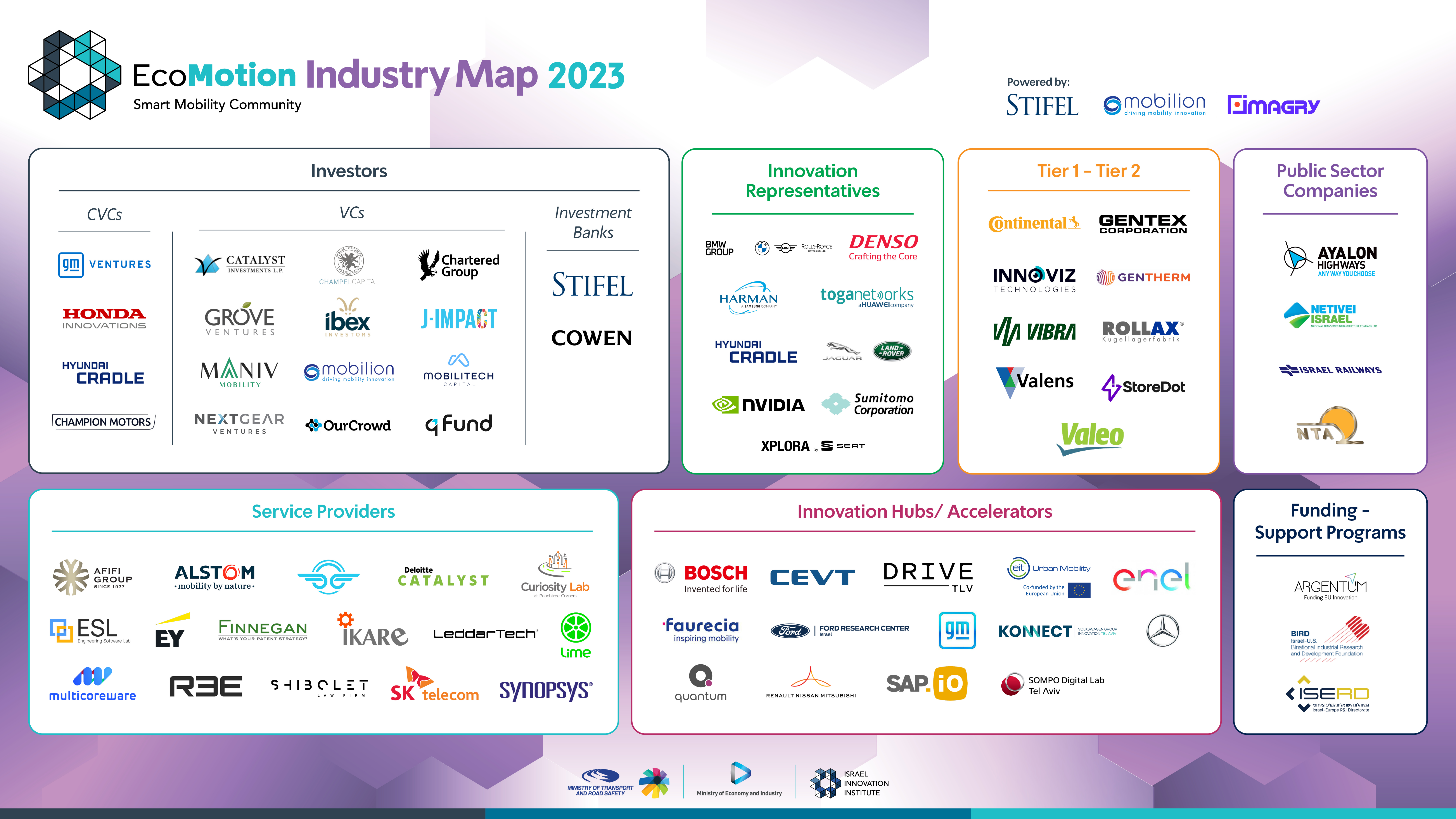
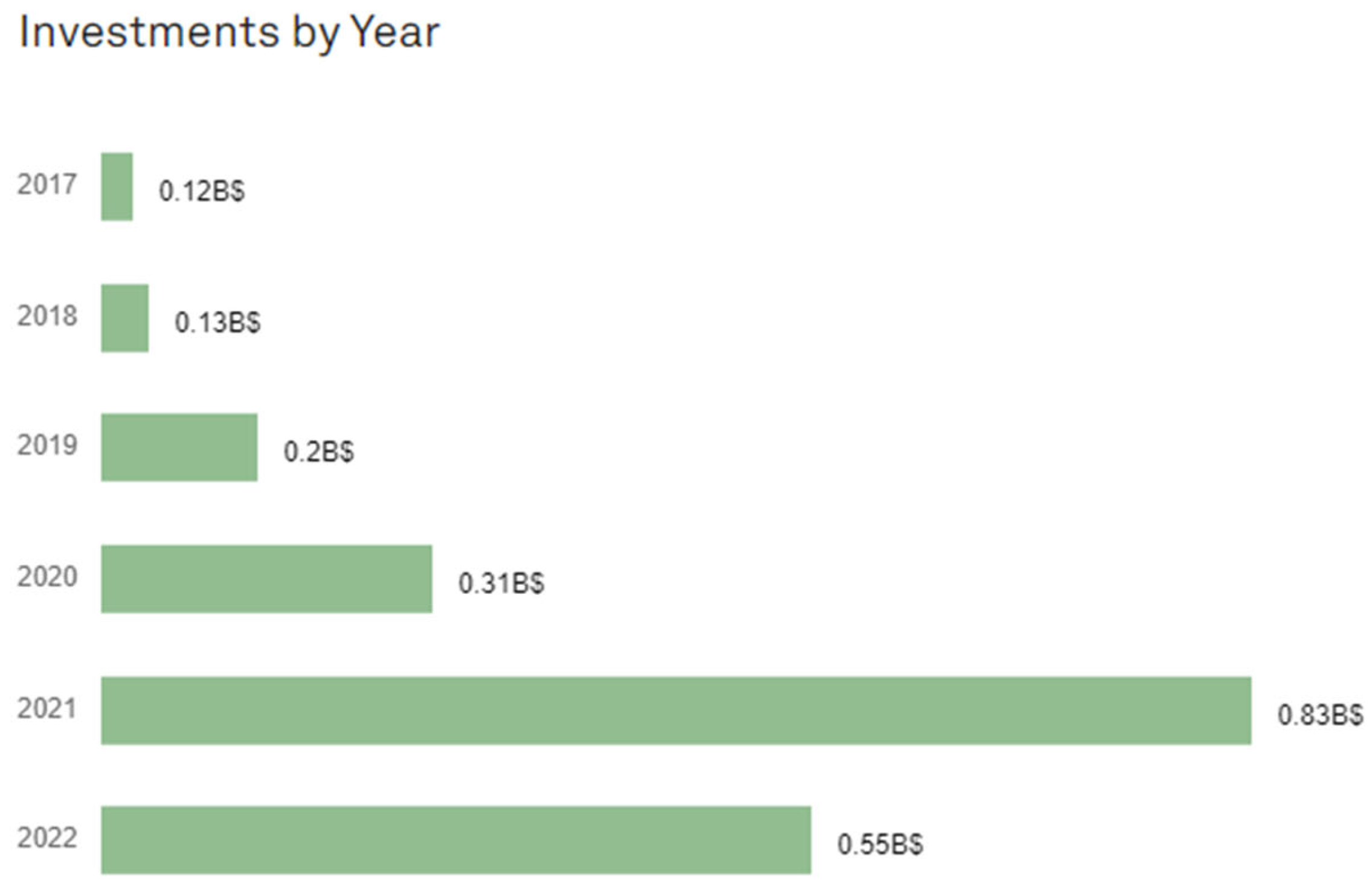
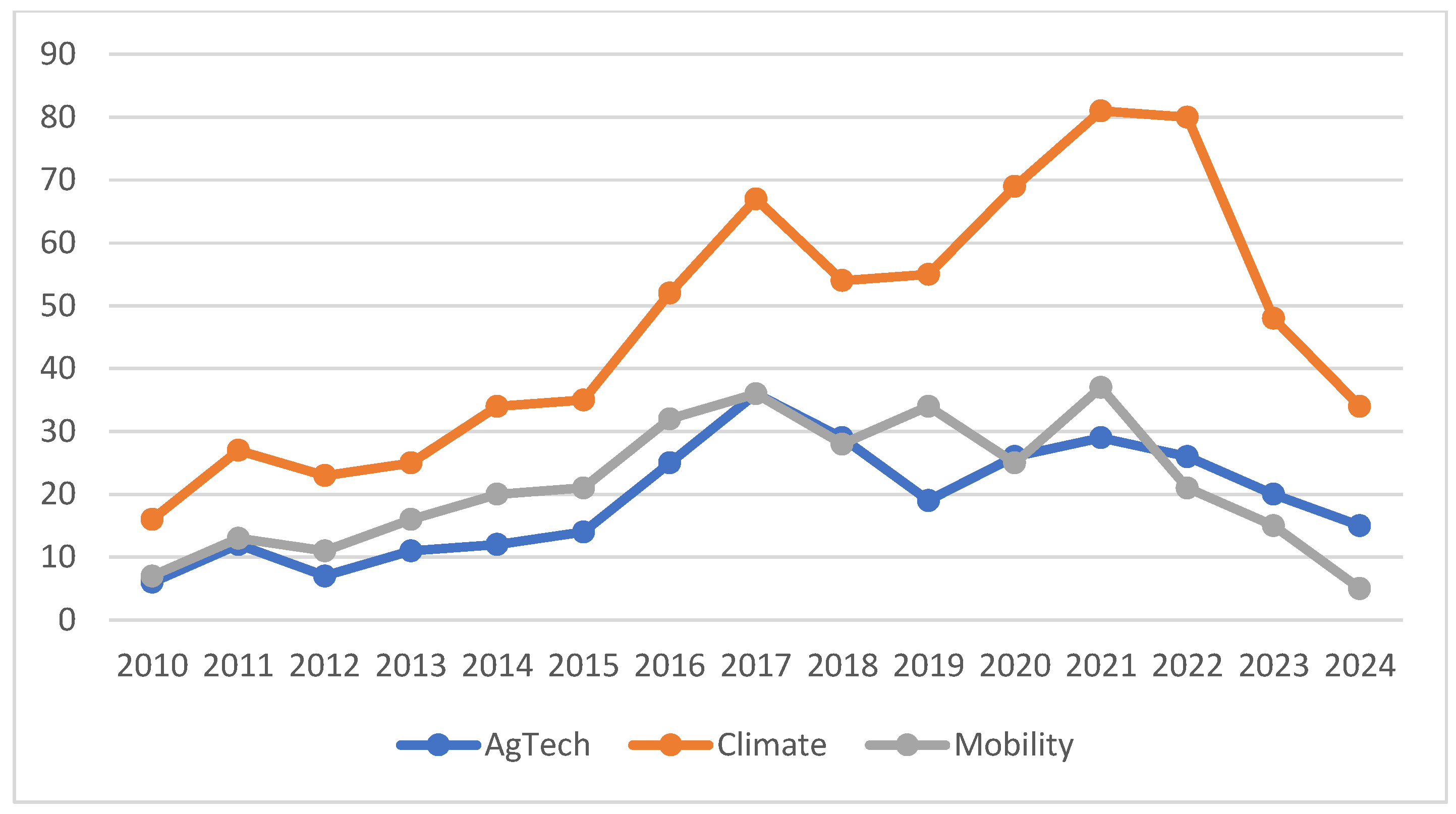
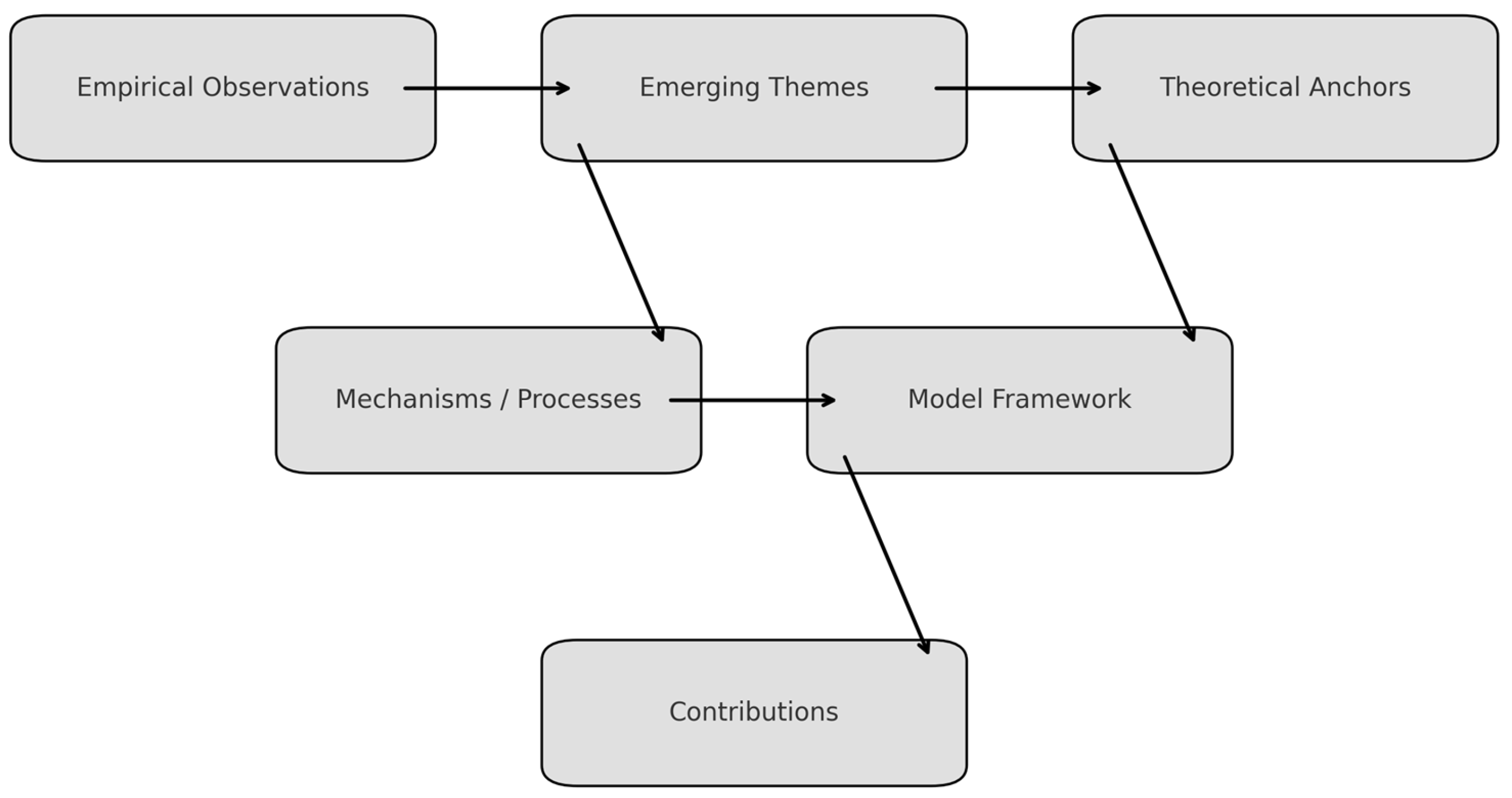
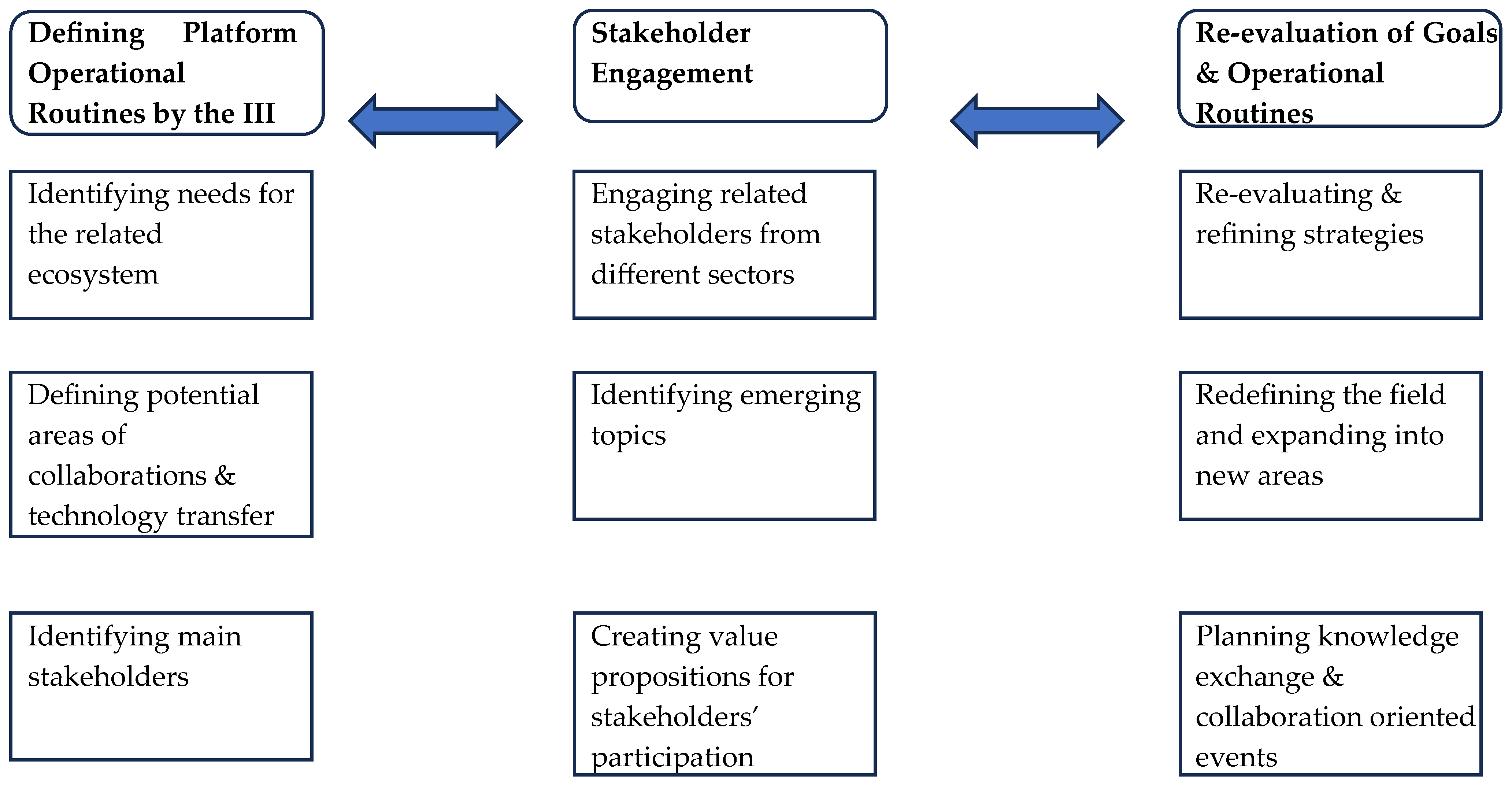
| Model | Definition | Key Characteristics | Related References |
|---|---|---|---|
| Open-Innovation Hubs | Collaborative physical or virtual spaces that connect startups, corporates, academia, and public actors to accelerate idea exchange and joint innovation. | Multi-stakeholder engagement: - Open access or semi-curated participation - Often privately or hybrid funded - Emphasis on co-creation and matchmaking | Bogers, M., Chesbrough, H., & Moedas, C. (2018). Open innovation: Research, practices, and policies. California Management Review, 60(2), 5–16. [49] Salter, A., Criscuolo, P., & Ter Wal, A. L. J. (2014). Coping with open innovation: Responding to the challenges of external engagement. Research Policy, 43(2), 272–282 [53] |
| Triple Helix Model | A conceptual framework describing innovation as the outcome of dynamic interactions between university, industry, and government sectors. | Institutional interplay: - Focus on systemic innovation capacity - Common in national/regional policy discourse - Often used to guide governance structures | Etzkowitz, H., & Zhou, C. (2017). The Triple Helix: University–industry–government innovation and entrepreneurship. Routledge. [54] Perkmann, M., Tartari, V., McKelvey, M., et al. (2013). Academic engagement and commercialisation: A review of the literature on university–industry relations. Research Policy, 42(2), 423–442 [55] |
| Innovation Labs | Structured organizational units or dedicated spaces created to experiment with new ideas, often using design thinking and rapid prototyping within or across firms. | Agile, small-team environments: - Focus on experimentation and iteration - Often corporate-sponsored - May operate internally or externally | Björk, J., Boccardelli, P., & Magnusson, M. (2010). Ideation capabilities for continuous innovation. Creativity and Innovation Management, 19(3), 385–396 [56] Werker, C., & Ahmed, M. U. (2022). Innovation labs in organizations: An integrative framework and research agenda. Organization Studies, 43(3), 375–397 [57] |
| Data-Gathering Tools | Content | Details |
| Participant Observations | Community events | 12 events observed |
| Interviews | Board members, community members, and community managers. | 18 interviews |
| Archived Data | Mission statements, vision documents, the platform’s websites, presentations, internal documents of the III. | Field material from various sources reviewed and analyzed based on inter-judge reliability. |
Disclaimer/Publisher’s Note: The statements, opinions and data contained in all publications are solely those of the individual author(s) and contributor(s) and not of MDPI and/or the editor(s). MDPI and/or the editor(s) disclaim responsibility for any injury to people or property resulting from any ideas, methods, instructions or products referred to in the content. |
© 2025 by the authors. Licensee MDPI, Basel, Switzerland. This article is an open access article distributed under the terms and conditions of the Creative Commons Attribution (CC BY) license (https://creativecommons.org/licenses/by/4.0/).
Share and Cite
Oliver, A.L.; Rittblat, R.; Menuhin, J. From Silos to Synergies: A Nexus Framework for Innovation-Driven Sustainability Ecosystems. Sustainability 2025, 17, 6239. https://doi.org/10.3390/su17146239
Oliver AL, Rittblat R, Menuhin J. From Silos to Synergies: A Nexus Framework for Innovation-Driven Sustainability Ecosystems. Sustainability. 2025; 17(14):6239. https://doi.org/10.3390/su17146239
Chicago/Turabian StyleOliver, Amalya L., Rotem Rittblat, and Jonathan Menuhin. 2025. "From Silos to Synergies: A Nexus Framework for Innovation-Driven Sustainability Ecosystems" Sustainability 17, no. 14: 6239. https://doi.org/10.3390/su17146239
APA StyleOliver, A. L., Rittblat, R., & Menuhin, J. (2025). From Silos to Synergies: A Nexus Framework for Innovation-Driven Sustainability Ecosystems. Sustainability, 17(14), 6239. https://doi.org/10.3390/su17146239






